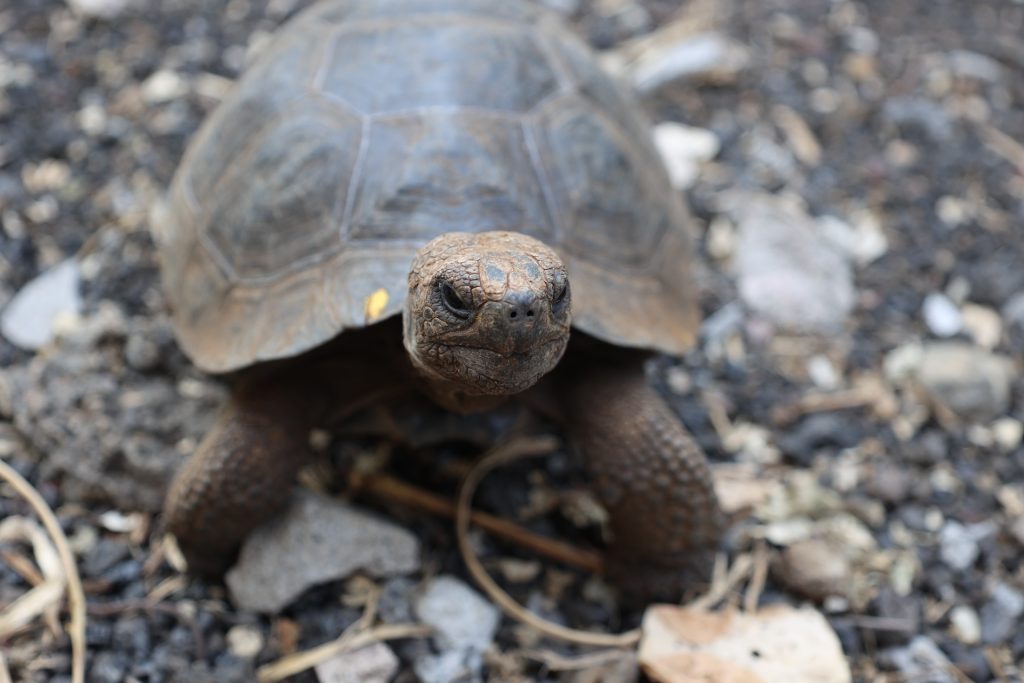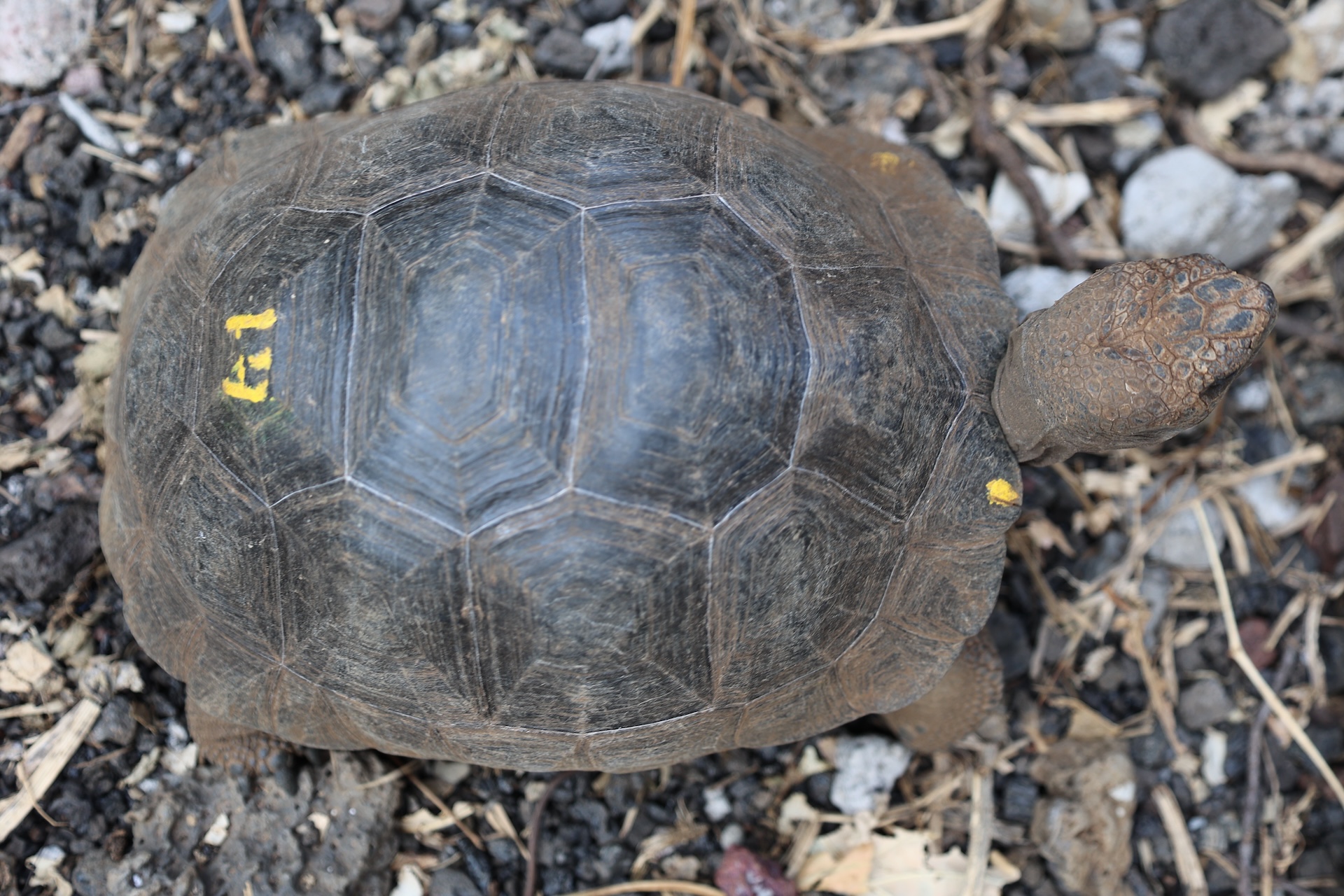The Santiago tortoise was named in honor of Charles Darwin, who visited the island on his historic voyage to Galápagos and took records of the tortoises he found there. The Santiago species is Critically Endangered, in large part due to exploitation in past centuries by whalers and other mariners. Since it was easier to hunt female tortoises that live closer to the coast and weigh less than their male counterparts, this population skewed to mostly males, which severely harmed species growth.
To rebuild the population more quickly, eggs and hatchlings are collected from natural nests, reared in the Tortoise Center, and then released at 4-5 years old when they are big and strong enough to survive in the wild. Santiago Tortoises have an intermediate shell shape that appears to be mostly domed, with a slightly higher saddleback formation at the front. It is one of the larger Giant Tortoise species, with a thick and heavy shell.
By adopting a Santiago Giant Tortoise, you are on the front lines to save a species from the brink of extinction. Your adoption will help Galápagos Conservancy incubate eggs at warm temperatures which will produce more females and therefore allow tortoises to nest again someday on Santiago Island.

